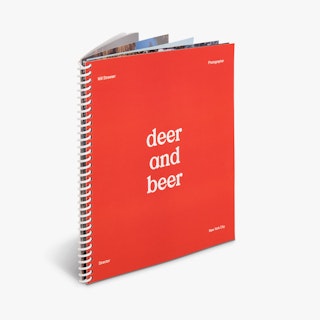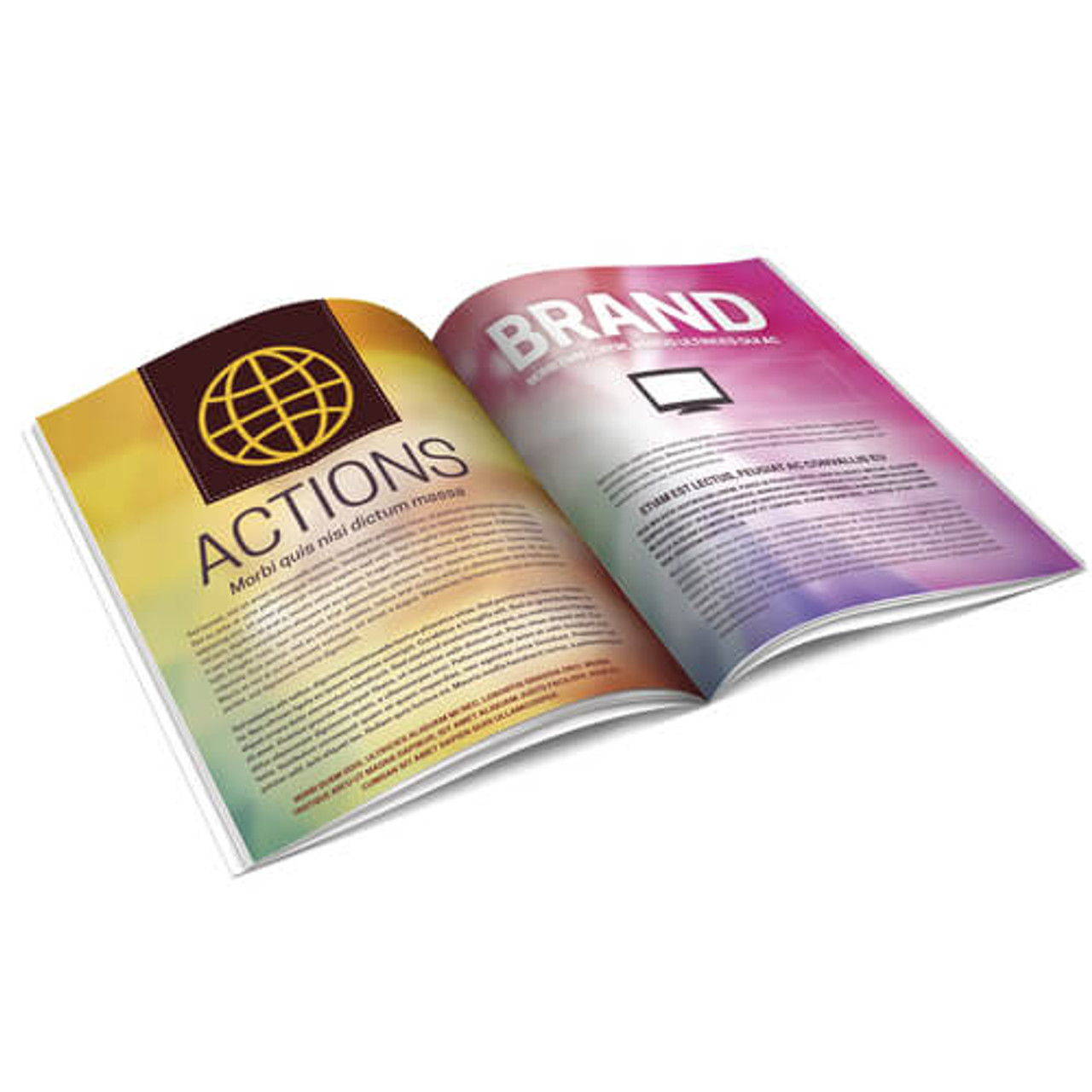What Every Marketer Should Know About Interactive Booklet Printing
What Every Marketer Should Know About Interactive Booklet Printing
Blog Article
The Essential Overview to Recognizing Pamphlet Printing Options and Techniques
The procedure of booklet printing entails several considerations that can substantially influence the last item. From picking the appropriate format and dimension to understanding the subtleties of binding approaches, each selection plays a necessary function. In addition, variables such as paper supply and printing methods additional influence the performance of the brochure. As one navigates these choices, it becomes important to grasp just how they interconnect and what that means for the overall outcome.
Recognizing Pamphlet Dimensions and formats
When taking into consideration brochure printing, comprehending the various styles and sizes offered is vital for accomplishing the wanted presentation. Booklets can be created in countless layouts, including saddle-stitched, spiral-bound, and perfect-bound, each offering distinct advantages. Usual sizes range from typical letter (8.5 x 11 inches) to smaller sized options like A5 (5.8 x 8.3 inches), permitting flexibility based on material and target audience.Selecting the ideal size can influence both the layout and visitor interaction. Larger dimensions may fit aesthetically driven web content, while smaller sized layouts may be extra easy to use and portable. In addition, the variety of web pages influences the selection of binding technique, as thicker pamphlets might require stronger bindings. Inevitably, comprehending these elements enables for a more tailored technique, guaranteeing that the end product aligns with the designated message and visual, enhancing the general effectiveness of the interaction.
Selecting the Right Paper Stock

Binding Methods: Considerations and choices
When it pertains to binding techniques for brochures, several alternatives are offered, each with distinctive advantages. Saddle stitch binding provides a cost-efficient service for thinner booklets, while excellent binding methods offer an even more refined appearance for thicker magazines. Wire-O binding sticks out for its longevity and simplicity of usage, making it ideal for files that call for adaptability.
Saddle Stitch Binding
Saddle stitch binding supplies a affordable and useful solution for setting up brochures, making it a popular option amongst publishers and organizations. This binding approach includes folding sheets of paper in half and stapling them along the fold line, producing a orderly and neat appearance. Normally ideal for brochures with a reduced web page matter, saddle stitching is ideal for publications, pamphlets, and training materials. The simplicity of this strategy permits fast production and is often favored for short runs or promotional things. It is vital to note that saddle stitch binding might not be appropriate for thicker brochures, as the back may not hold up under enhanced weight. Generally, it remains a trusted choice for lots of printing tasks.
Perfect Binding Strategies
Perfect binding is a commonly used strategy that gives a refined and specialist coating to booklets and publications. This technique entails gluing the web pages together at the back making use of a strong adhesive, permitting for a clean side and the capacity to hold a bigger variety of pages contrasted to saddle stitching. Perfect binding is specifically suitable for thicker pamphlets, such as catalogs and annual records, where a tough, level back is wanted. In addition, it supplies the alternative for a published cover that can be developed to improve visual charm. Factors to consider such as page count, paper weight, and the intended use of the pamphlet should be taken into account, as they can impact toughness and overall quality.
Wire-O Binding Alternatives
Wire-O binding, known for its durability and flexibility, supplies an exceptional choice for booklets that call for easy page turning and a professional appearance. This binding technique utilizes a collection of metal loops that hold web pages securely, allowing them to lie flat when open. It is particularly suitable for magazines, discussions, and manuals because of its durable nature. Wire-O binding is offered in various shades and sizes, accommodating various web page matters and densities. Additionally, it permits the incorporation of tabs and covers, enhancing the brochure's general aesthetic. Factors to consider for Wire-O binding include the choice of cord shade, the size of the loops, and the extent of customization wanted, all of which can greatly influence the end product's look and capability.
Digital vs. Offset Printing: Which Is Best for You?
When selecting a printing technique for pamphlets, understanding the differences between electronic and counter printing is essential. Digital printing utilizes modern-day innovation to produce premium prints rapidly and affordably, making it suitable for short runs or tasks needing fast turnaround times. It enables customization, supplying the capability to print on-demand with minimal waste.In comparison, counter printing is a typical technique that succeeds in producing big quantities with consistent top quality. It entails transferring ink from a plate to a rubber covering, after that to the paper, which causes exact details and vibrant shades. Offset printing commonly calls for longer setup times and is a lot more cost-efficient for larger volumes.Ultimately, the choice between digital and balance out printing depends on project requirements, budget plan, and desired quantity. For small, time-sensitive tasks, electronic could be the very best option, while countered may be more effective for bigger, high-quality manufacturings.

Designing Your Brochure: Tips and Best Practices
When creating a booklet, mindful attention to design, font style choice, and shade use can considerably improve its performance. A well-structured design overviews the reader's eye, while proper fonts ensure readability and share the wanted tone. Additionally, efficient use of shade can evoke feelings and emphasize vital info, making the overall design a lot more impactful.
Picking the Right Layout
Exactly how can one successfully choose the ideal format for a pamphlet? Initially, it is important to examine the pamphlet's function and target market. A tidy, organized format boosts readability and engagement. Making use of a grid system can help in straightening components continually, producing an expert look. Additionally, integrating aesthetic pecking order through varying sizes and placements of images and message can direct the viewers's eye and stress essential information. It is additionally essential to leave adequate white room, which prevents overcrowding and enables better emphasis. Examining various formats with mock-ups can supply understanding into how the style executes in real-world situations, guaranteeing that the last product meets both visual and useful needs. Useful Selecting Ideal Typefaces
An appropriate font can greatly click to read enhance the general layout of a brochure, matching the index layout and reinforcing the material's message. The selection of typefaces ought to consider readability, particularly for body text, as it guarantees the details is obtainable to all readers. Sans-serif font styles are commonly preferred for digital layouts, while serif typefaces can provide a traditional feel in published materials. It's advisable to limit font selections to two or three to keep aesthetic coherence. In addition, font dimension plays a crucial function; headings should be not overwhelming yet unique, while body text must be comfortable for analysis. When picking font styles, placement with the booklet's theme and target market is necessary for reliable interaction and visual charm.
Reliable Use Color
Shade acts as a powerful device in booklet design, guiding and shaping perceptions visitor feelings. It can evoke feelings of enjoyment, calmness, or trust, depending upon the colors picked. Designers need to think about color concept principles, ensuring that the selected palette aligns with the booklet's message and target audience. Making use of cozy colors like red and orange can produce necessity, while cooler tones like environment-friendly and blue foster tranquility.Additionally, comparison plays an essential function; corresponding colors can boost readability and aesthetic allure. Uniformity in shade use throughout pages further enhances brand name identification and cohesion. Ultimately, reliable color application not just records interest yet likewise reinforces the booklet's function, making it a crucial read this post here element of successful layout.
Ending Up Touches: Coatings and Special Impacts
While several consider the material and format of a booklet one of the most essential aspects, the finishing touches, such as coatings and unique impacts, play an essential function in enhancing its general appeal. Coatings can give defense and resilience, guaranteeing that the brochure endures deterioration. Matte finishes use an advanced, non-reflective surface, while glossy coverings can make shades show up even more captivating and vivid. Unique effects, like embossing or aluminum foil marking, add a responsive measurement that can create a remarkable impression. These techniques can highlight details locations, drawing focus to crucial information or creating aesthetic passion. In addition, UV finish can provide a high-shine finish that raises the general look.Together, these completing touches not just enhance the booklet's visual yet likewise connect expertise and attention to information, inevitably leaving a lasting effect on the visitor.
Cost Factors To Consider for Pamphlet Printing
Comprehending the various expense factors to consider for pamphlet printing is necessary for services and organizations aiming to optimize their spending plans. Key aspects influencing prices include the selection of binding, ink, and paper methods. Greater high quality materials, such as superior paper or specialized inks, generally boost the overall cost. In addition, the dimension and page matter of the booklet play a substantial duty; bigger pamphlets need more resources and time to produce.Another essential factor to consider is the printing method, whether digital or offset, as each has its own rates structure and suitability for different quantities. Services ought to additionally consider style costs, which can differ based upon complexity and making use of specialist services. Eventually, shipping and handling charges can contribute to the overall, especially for huge orders. By assessing these elements, organizations can make enlightened decisions that align with their financial capacities while achieving the preferred quality in their published products.
Regularly Asked Inquiries
What Are the Ecological Impacts of Pamphlet Printing?
The ecological impacts of booklet printing consist of logging from paper production, carbon discharges from transport, and waste generation from thrown out materials - Booklet Printing. Lasting practices, such as utilizing recycled paper and eco-friendly inks, can minimize these effects
Exactly How Can I Make Certain Shade Accuracy in My Brochure?
To guarantee shade precision in a brochure, one need to use calibrated screens, utilize specialist shade accounts, conduct test prints, and choose high-quality printing services that supply shade matching and proofing options for finest outcomes.
What Is the Normal Turn-around Time for Pamphlet Printing?
The regular turn-around time for pamphlet printing differs relying on the complexity and quantity - Booklet Printing. Generally, it ranges from a few days to two weeks, influenced by factors such as publishing approaches and ending up needs
Exist Minimum Order Quantities for Brochure Printing?

Can I Print Brochures in Multiple Languages?
Publishing brochures in multiple languages is feasible. Numerous printing solutions supply options for multilingual or multilingual layouts, permitting effective interaction. Cautious preparation warranties that design aspects fit different languages without endangering readability or visual appeals. In addition, factors such as paper stock and printing techniques additional influence the performance of the brochure. When considering pamphlet printing, recognizing the numerous formats and sizes available is essential for achieving the preferred presentation. When picking a printing technique for booklets, comprehending the distinctions in between electronic and offset printing is necessary. In addition, the size and web page matter of the brochure play a considerable function; larger brochures need more resources and time to produce.Another vital consideration is the printing technique, whether digital or offset, as each has its own rates framework and suitability for different amounts. The environmental effects of booklet printing consist of deforestation from paper production, carbon discharges from transport, and waste generation from discarded products.
Report this page